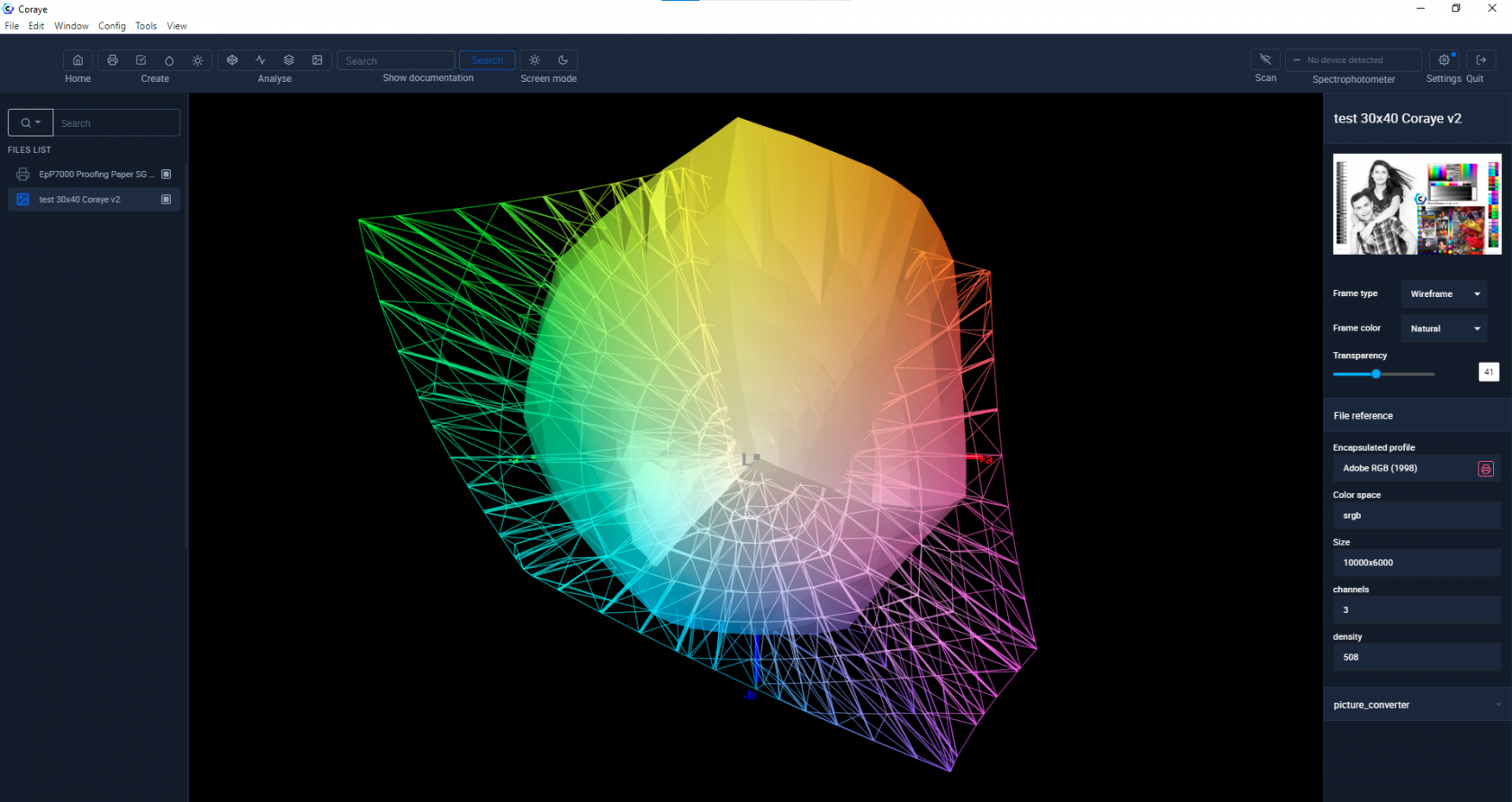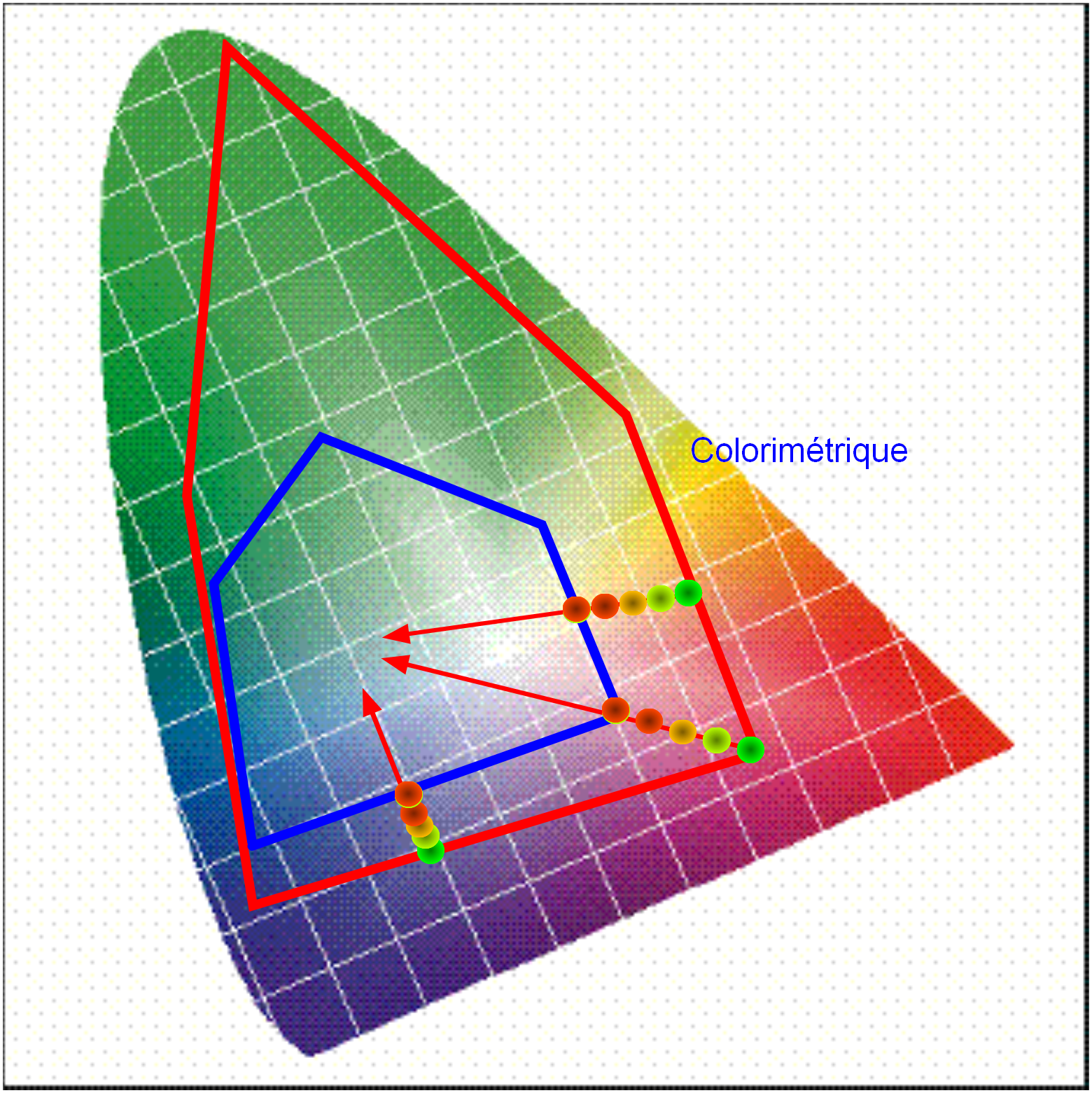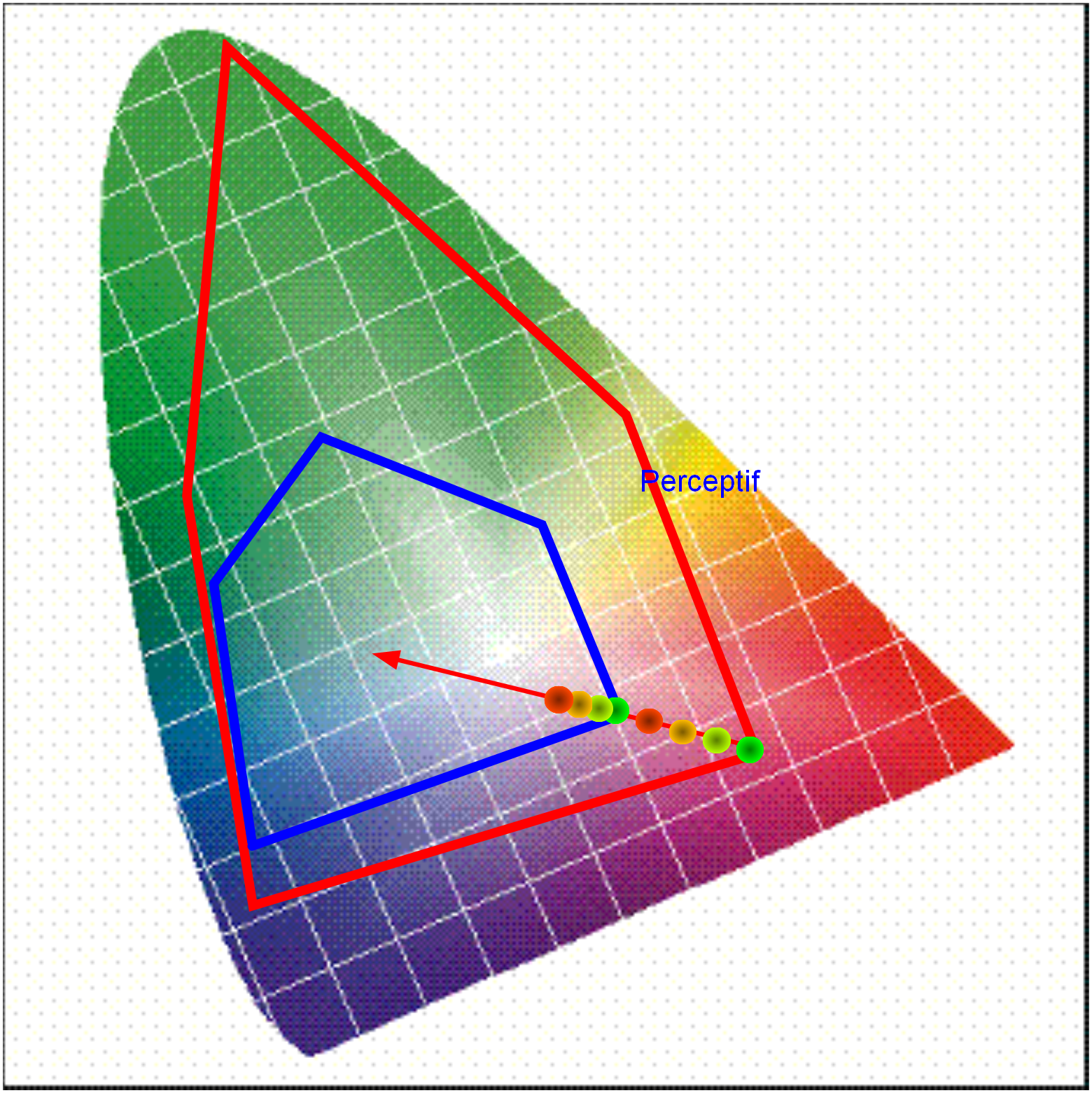Rendering methods
It is not uncommon for images from capture devices such as digital cameras or scanners to produce images in which all colors cannot be faithfully reproduced on a printer.
The question we can ask ourselves is:
How will the colors that come out of the printer's gamut be reproduced?
The answer is: it depends on the rendering method
 Gamut of an image compared to the gamut of a printer
Gamut of an image compared to the gamut of a printer
There are four rendering methods:
Relative colorimetry - compression of out-of-gamut colors to the closest color, with white shifting
- Saturated colors that are outside the destination space will all be overwritten, but the common colors between the source space and the destination space will not be changed.
This rendering mode is suitable for images that do not contain a lot of saturated colors.
When using this colorimetric rendering mode, it is possible to activate the black point compensation, which will make it possible to obtain harmonious black gradients.
Perceptual or perceptual - homothetic compression from the source gamut to the destination gamut
The colors in the source space will all be compressed in the destination space.
This will have the effect of desaturating all the colors of the image so as to preserve the details contained in the most saturated colors.
Absolute colorimetry - compression of non-gamut colors to the closest color, with paper simulation
⦁ application: proofing
Saturation - maximization of saturation
⦁ application: presentat. graph (histograms, ...)

